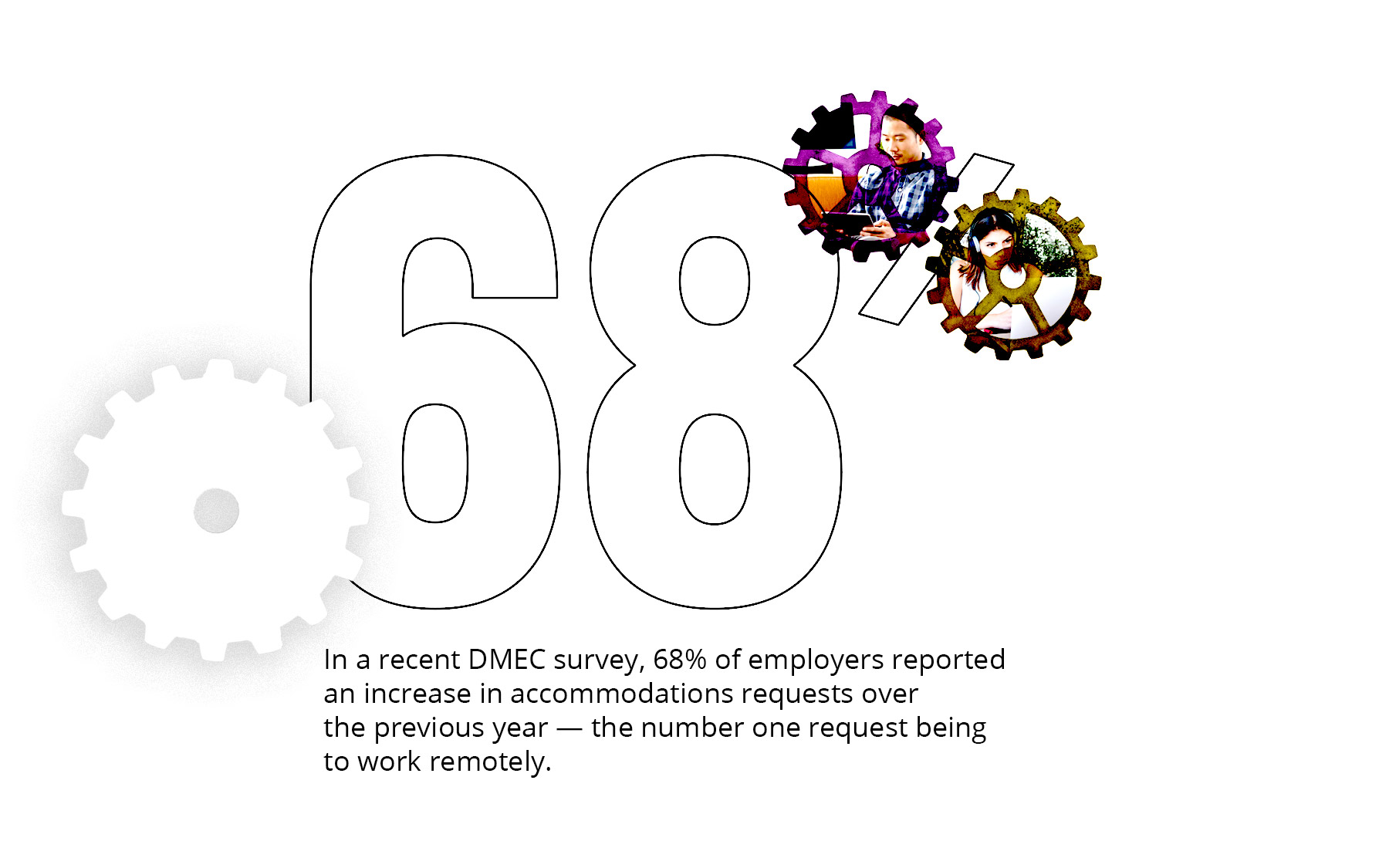For more information on universal design, visit these resources:
JAN article on universal design in the workplace
https://askjan.org/topics/univdes.cfm?csSearch=3102847_1
National Disability Authority on the seven principles of universal design
http://universaldesign.ie/what-is-universal-design/the-7-principles/the-7-principles.html
Many organizations have been employing universal design, whether consciously or not, as they work to keep their workplaces functioning throughout the COVID-19 pandemic, decreasing exposure and transmission by installing automatic doors, improving air quality, lessening the number of unnecessary in-person interactions, etc.

COVID-19’s impact on accommodations
A year and a half into the pandemic, we’re just now beginning to understand the “long-haul” effects many are suffering after a COVID-19 diagnosis. Along with accommodating for physical symptoms that continue long after the virus has left the body, we also have an opportunity to look differently at employees’ mental health concerns, particularly as more and more workers express anxiety over returning to a post-COVID workspace. An employee with a physical diagnosis can go through a capacity assessment and measure their recovery progress through physical therapy; there are fewer opportunities for those kinds of metrics with mental health.
While the world slowly moves beyond a nearly singular focus on the pandemic, its effects will be wide-reaching and long-term. In a recent DMEC survey, 68% of employers reported an increase in accommodation requests over the previous year — the number one request being to work remotely — and we have every reason to believe this will continue for the foreseeable future.
Before COVID-19, many employers claimed that allowing employees to work from home would unduly burden the organization. Since COVID-19, those same employers, out of necessity, had to rethink, and in many instances require, remote working. Moving forward, it may be more difficult to prove that working from home is logistically impossible or bad for business. And where absence plans were traditionally built for the workplace, employers now need them to embrace a newly expanded remote workforce.
WFH as a new way of life.
Absence plans were built around the traditional workplace — now we need them for employees working from home. The Department of Labor is clear that just because you allowed remote work during the height of the pandemic doesn’t mean you have to continue offering it forever. But consider what kind of leader and organization you want to be. How you lead will have long-lasting effects on how you define yourself — or, perhaps more importantly, how others define you — as an employer. Compliance and the bottom line are crucial, of course, but so is safety, inclusion and morale.
Take proactive measures to invest in the whole employee, wherever their work is being done. Find ways to conduct wellness checks for your remote workers. Arrange for standing desks in home offices. Stay flexible with scheduling. Offer in-home ergonomic evaluations. Chances are, your employees have already figured out how to transition to a new environment, and this increased opportunity to provide accommodations can set you apart.
As is so often the case, there are silver linings: The pandemic has led to a broader view of what is possible for workers and accommodations have been an important part of the conversation. Employees who aren’t able to work in a traditional workplace are finding great success with expanded work from home options, and employers are benefiting from a more diverse talent pool.
By making accommodations part of your “total health” management strategy, you’re helping your workforce stay healthy and happy and, by extension, productive.

